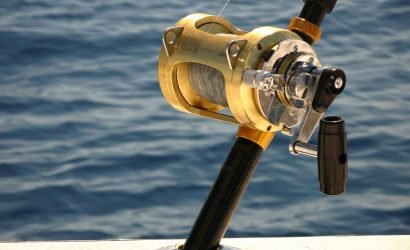Large populations of the Eastern Shore greatly enjoy eating fish. Fish caught in our local waters tend to be extremely fresh, really tasty, cooked quickly, and benefit our fishing market and coastal economy. Supporting fisherman, eating fresh seafood, and dining locally is appealing to many who live on the shore. Tuna, flounder, smelt, and snapper are found regularly on restaurant menus in the area. Have you seen snakehead fish on the menu anywhere, yet?
The snakehead fish is a large predatory, extremely invasive fish known for its teeth, snake-like scales, ability to live on land for up to four days, and travel up to ¼ mile on land by thrashing its long slender body. How would you feel about eating a fish of this sort?
During the Ocean City Hotel Motel Restaurant Association Trade Show earlier this month, Chef Chad Wells created delicious fish tacos from the beastly scaled creatures.
“The best way to get rid of them is to be eating them,” Wells said while he filleted the fish at the trade show.
During the trade show, Chef Wells tossed pieces of raw snakehead fish into a large pan, mixed it with fresh chopped cilantro, squeezed lime juice, and kept an eye on it until it was a beautiful brown color speckled with green herbs. The fish was used to create an appealing fish taco on a fresh soft tortilla shell. At Alewife, Wells’ restaurant in Baltimore, MD, the fish is paired with delicious side dishes and artisan ales.
In the Ocean City area, The Shark on the Harbor has plans to experiment with the snakehead fish. They hope to prepare the fish two ways; as a ceviche with seaweed butter popcorn skewers and with red chile aioli and bacon with cashews.
The snakehead fish is commonly found in Asian cuisine; soups in particular. The fish, native to Asia, are an aggressive, rapidly breeding predator that can overwhelm habitat and push out local fish. These slithering and swimming creatures were originally discovered in a Crofton, MD pond in 2002. They were completely eradicated – or thought to be. By 2004, several fish were found in the Potomac River and its tributaries throughout Maryland and Virginia.
After the flooding caused by Hurricane Irene last fall, record-levels of freshwater runoff from neighboring rivers created the lowest salinity levels ever noted in the upper Chesapeake Bay. It’s a possibility that low salinity in the Chesapeake Bay this year may have allowed the invasive fish to escape from the Potomac River. The snake-like species has settled with alarming ease into Chesapeake-area rivers, streams, and ponds. It is feared that this destructive fish could adapt to the brackish waters of the Chesapeake and enter the bay waters of the Ocean City area.
Regulations require anglers to kill the fish and the Department of Natural Resources is giving prizes through a drawing to anglers who catch, kill and enter photos of the snakeheads on the agency’s Anglers Log website. Over 300 pounds of Snakeheads were caught in the Potomac River during Labor Day weekend alone last year.
The fish has proven to be a great threat to local ecosystems. Many chefs and fishermen hope that diners enjoy the taste of snakehead enough to wipe it out of their local fishing waters. In Thailand, the snakehead is referred to as ‘reincarnations of a sinner’. We’ve heard that this sinner tastes like dense and sweet red snapper.









